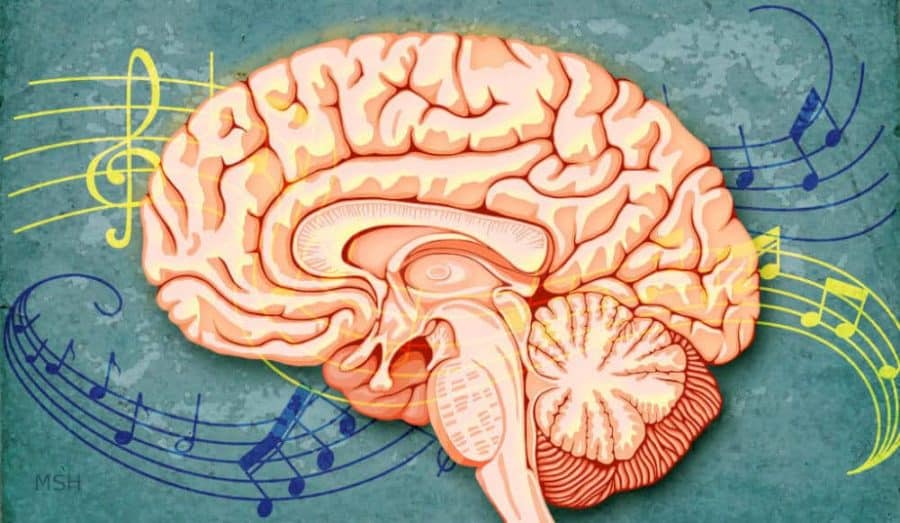Scientists have discovered significant genetic overlap between our ability to keep a musical beat and process language, shedding new light on how these uniquely human traits may have evolved together. The groundbreaking study, analyzing data from over a million individuals, reveals that many of the same genes influence both our capacity for rhythm and our language abilities.
Published in Nature Human Behaviour | Estimated reading time: 5 minutes
Our ability to move to a beat and our capacity for language have long fascinated scientists as quintessentially human traits. Now, researchers at Vanderbilt University Medical Center and the Max Planck Institute for Psycholinguistics have uncovered compelling evidence that these abilities share common genetic foundations.
By analyzing vast datasets encompassing over a million individuals, the research team identified 16 specific regions of the genome where variations influence both rhythm ability and language skills. These shared genetic factors appear to particularly affect the brain’s connectivity – the complex network of neural pathways that enable communication between different brain regions.
“We were particularly intrigued by the finding of genetic variants jointly tied to rhythm and language as being enriched for oligodendrocytes in the brain,” explains Dr. Reyna Gordon, associate professor at Vanderbilt University Medical Center and senior study senior author. These specialized brain cells help maintain and strengthen the connections between different brain areas, suggesting that robust neural connectivity may be crucial for both abilities.
One of the study’s most striking findings emerged from examining a specific region on chromosome 20, which appears to influence both neural connectivity in the language network and rhythm capabilities. This discovery aligns with previous research suggesting that the human brain’s strong connections between auditory and motor regions may have co-evolved to support both music and language abilities.
The research also revealed that genetic variants associated with rhythm impairments often coincided with those linked to dyslexia, while genes connected to stronger rhythm abilities frequently appeared alongside variants associated with better language and reading performance. This genetic relationship may help explain why individuals who struggle with rhythm often experience language-related challenges, and vice versa.
A particularly intriguing discovery involved the DLAT gene, which shows genetic variations affecting both rhythm ability and dyslexia risk. This gene, previously linked to rare neurodevelopmental disorders, may provide crucial insights into how these cognitive abilities developed during human evolution.
The implications of this research extend beyond our understanding of human evolution. These findings could potentially lead to earlier identification of individuals at risk for reading and language impairments, enabling more timely and targeted interventions.
Glossary
- Oligodendrocytes
- Specialized brain cells that help maintain and strengthen connections between different brain regions by producing myelin, a fatty substance that insulates nerve fibers.
- Neural Connectivity
- The network of connections between different regions of the brain that allow them to communicate and coordinate with each other.
- Genetic Variants
- Different versions of genes that can lead to variations in traits or characteristics among individuals.
Test Your Knowledge
How many genome regions were found to overlap between rhythm and language abilities?
The study identified 16 regions of the genome that showed overlap between rhythm and language abilities.
Which chromosome contains the region linked to both neural connectivity in the language network and rhythm?
A specific region on chromosome 20 was found to influence both neural connectivity in the language network and rhythm capabilities.
What specific type of brain cell was highlighted in the study’s findings about rhythm and language?
Oligodendrocytes were identified as being particularly important, as genetic variants affecting both rhythm and language were enriched in these cells.
How might genetic variants that affect both rhythm and language abilities influence brain function, according to the study’s findings?
The shared genetic variants appear to particularly affect neural connectivity – the complex network of pathways that enable communication between different brain regions. This suggests that robust neural connectivity may be crucial for both abilities.
Enjoy this story? Subscribe to our newsletter at scienceblog.substack.com.
If our reporting has informed or inspired you, please consider making a donation. Every contribution, no matter the size, empowers us to continue delivering accurate, engaging, and trustworthy science and medical news. Independent journalism requires time, effort, and resources—your support ensures we can keep uncovering the stories that matter most to you.
Join us in making knowledge accessible and impactful. Thank you for standing with us!

